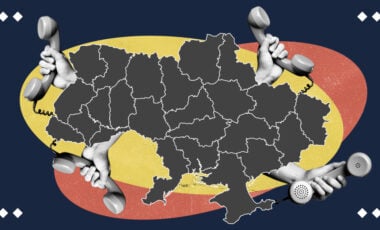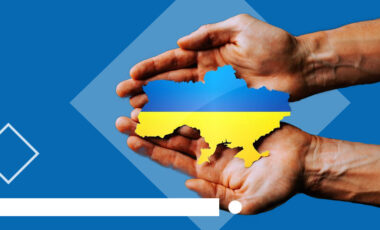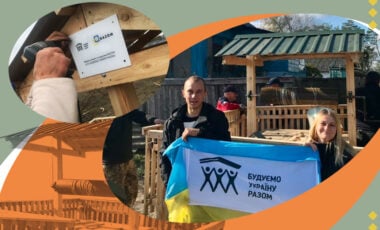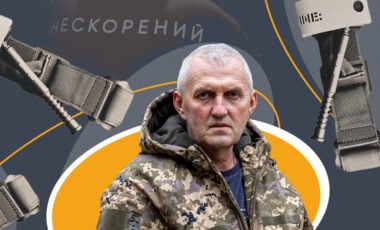Russia mobilizes troops on border with Ukraine's Kharkiv and Sumy regions – ISW

{Photo: social media
The Institute for the Study of War (ISW) analysts have collected and analyzed data showing that Russia is amassing its troops on the border with the Kharkiv and Sumy regions in an attempt to widen the front, push Ukrainian forces back, and regroup them along the border.
The Institute for the Study of War (ISW) reports this.
According to reports, Russian forces are concentrating an unspecified number of troops in the western Belgorod region near the border with Ukraine, likely to pin down and draw Ukrainian forces into the area and prepare for offensive operations aimed at expanding the Russian bridgehead in the border zone in the northern in the east of Ukraine.
Ukrainian President Volodymyr Zelensky said on May 26 that Russian troops are preparing for new offensive actions and are concentrating groups of unknown size near the Ukrainian border 90 kilometers northwest of Kharkiv.
Analysts assume that Zelensky referred to the Grayvoron-Borysivka-Proletarsky district west of the Belgorod region. Satellite images of the area show that in recent weeks, Russian troops have stepped up activity at bases and warehouses in populated areas of the area.
However, the current size of the possible concentration of Russian troops in the Graivoron-Borysivka-Proletarsky area remains unclear.
On May 26, Andriy Demchenko, the spokesperson for the State Border Guard Service of Ukraine, stated that Russian troops may initiate offensive operations in the Sumy region or in territories bordering the Kharkiv region that are adjacent to Sumy. The objective would be to expand and solidify Ukrainian forces along the northeastern border of Ukraine.
"Grayvoron-Borysivka-Proletarsky region, in particular, will allow Russian troops to launch offensive operations south in the direction of Zolochiv and Bohodukhiv, two Ukrainian cities northwest of Kharkiv within 25 kilometers of the border, or west in the direction of populated areas along the route, which connects Bohodukhiv with Sumy," the report reads.
In addition, experts point out that Russian troops can conduct offensive operations in one or both directions, and the Russian concentration here may be aimed at forcing Ukrainian troops to transfer forces and assets to a broader area of the border in the Kharkiv and Sumy regions.
The Russian military is also focusing its limited forces on the Kursk and Bryansk regions near the border with the Sumy region. Even this tiny concentration of troops may be intended to pull back and solidify the position of Ukrainian forces in the border area.
Russian forces are currently bringing their Northern Group near the border to its planned final strength. Until then, they will likely launch only limited offensive operations along the Sumy-Kharkiv line.
Even limited Russian offensive operations in these areas would add pressure to stretch Ukrainian human resources and equipment over a wider front and possibly allow Russian forces to establish tactical bridgeheads to support further operations either northwest of Kharkiv or toward the city of Sumy.
However, even at the upper limit of its declared final strength, the Northern Group of Forces will lack the human resources necessary to conduct a successful operation to encircle or capture the cities of Kharkiv or Sumy.
ISW Key Findings as of May 26:
- Russian forces are reportedly concentrating forces of unspecified size in the western Belgorod region near the border with Ukraine, likely to fix and draw Ukrainian troops to the area and prepare for offensive operations that aim to expand the Russian foothold in the international border area in northeastern Ukraine.
- Western officials continue to publicly debate Ukraine's right to use Western-provided weapons to strike military targets in Russia amid Russian efforts to persuade the West to continue its self-imposed limitations and divide the NATO alliance.
- Russia's defense industrial base (DIB) will reportedly manufacture and refurbish three times as many artillery shells as the West will produce in 2024. However, Russian shells reportedly suffer from quality-control issues, and Ukrainian artillery is reportedly more precise than Russian artillery.
- Kremlin officials continue to indicate that Russia is not interested in meaningful negotiations with Ukraine and promote Kremlin information operations that aim to push the West to make concessions on Ukraine's sovereign territory and people.
- Russian forces recently made confirmed advances near Svatove, Avdiivka, and Donetsk City.
- Former Wagner Group fighters continue to form new units under Rosgvardia and Chechen Akhmat Spetsnaz.
It is worth adding that the Institute for the Study of War believes that the Russian troops are probably trying to bring the number of the Northern Group to the planned final level before activating to carry out offensive operations in the north of the Kharkiv region. Such plans of the military command of the Russian Federation are evidenced by:
- the disparity of Russian units currently operating in the north of the Kharkiv region,
- the apparent indecision of the Russian military regarding the involvement of available reserves in hostilities.
This, as well as the premature start of Russian offensive operations, undermined the Russian Federation's success in the north of the Kharkiv region: the ISW notes that the offensive was a failure as a result.
In turn, the National Security and Defense Council believes that the Russian Federation has gathered about 50,000 soldiers on the border with the Kharkiv region of Ukraine; in particular, more than 30,000 occupiers are participating in the new offensive to the north of the region.

Ukraine's intelligence launches record attack on Russian radar from over 1,800km away in nighttime operation

Likely premature start of Russian offensive undermine Russian success in Kharkiv region — ISW



















































